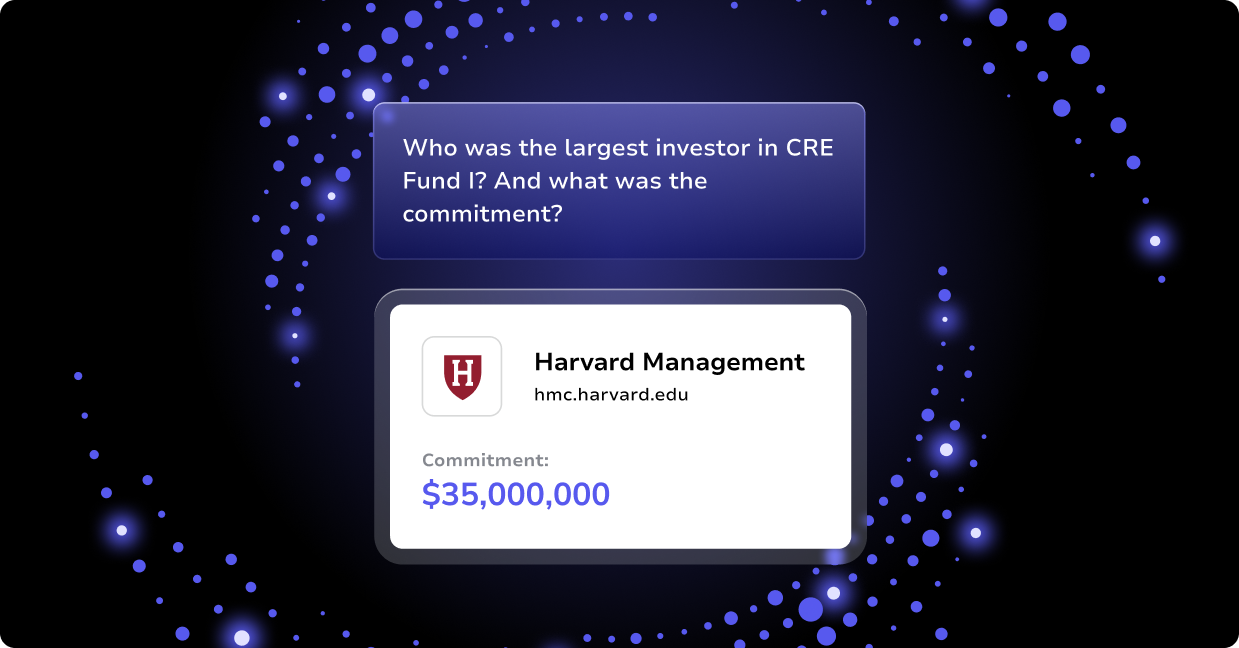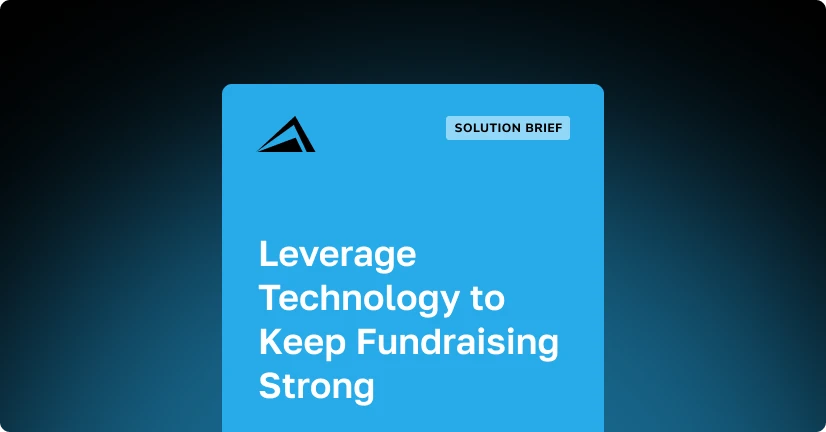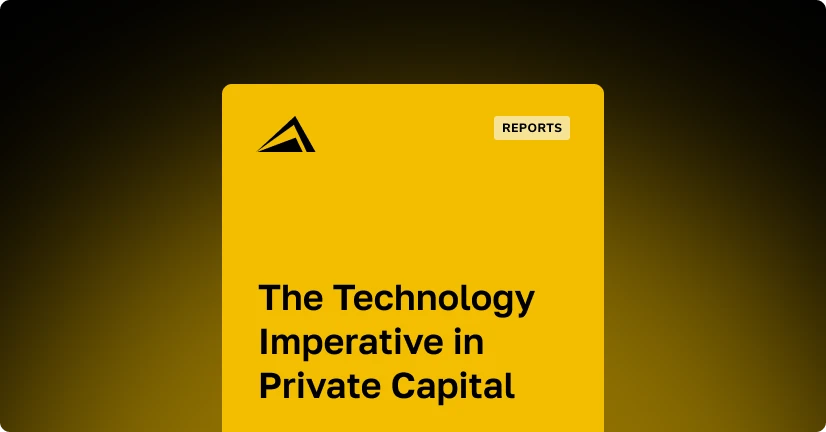Modern businesses have never seen such rapid technological advancements in private equity operations as we have in the last few decades. We’ve come to rely on technology like never before for a good reason—unparalleled efficiency.
Every industry on the planet sees the difference that digital technology makes to their processes, reporting, and communication. And since Private Equity often underpins crucial flows of capital and effective decision-making in many industries, there is vast potential with adopting technology.
Most companies believe their differentiation is rooted in having a smart, well-networked team with a good track record. But, if most companies think this same way, is it still a competitive advantage?
No, these intelligent, networked teams are blending into the pack. They need the right technology to give them a competitive edge.
Each Private Equity firm has a cobweb of processes. With today’s technology, the only way to be efficient in operations and beat the competition is to adopt technology that supports, elevates, and executes operations processes efficiently.
Stop Wasting Time While Raising Capital
The pandemic has altered how relationships are built and made raising capital even more laborious as LPs require additional attention. The fundraising process has been prolonged, with most funds taking longer than 12 months to close. Companies can significantly benefit from tools that improve and speed up the processes while still giving LPs the attention they require.
What does raising capital look like without modern technology, like artificial intelligence (AI)?
Many firms have a process that involves copying and pasting email templates with details on a new fund, their strategy, and historical track records. They then follow up that email with a call to secure interest. It’s a slow process with no clear, systemized prioritization of prospects. Everything is tracked on a spreadsheet. It’s manual, it’s time-consuming, it’s not efficient, and nothing about the process distinguishes your firm.
Companies that embrace technology are better equipped to define and measure workflows—ultimately gaining knowledge to achieve better results. With the right tools, they can come to the table armed with information to help target the right prospects and close a fund faster by identifying:
- Top capital raisers
- Most successful regions
- Origin of introductions most likely to close
- Common characteristics of most committed LPs
Knowing these data points helps businesses hone in on what works and avoid wasting time chasing prospective investors that are less likely to close. Firms can focus on LPs and investors who fit a specific profile to close the fund and generate the best returns.
Technology can also help firms communicate their competitive edge with data. By using objective data, companies can convey their track record, ongoing execution of investment thesis, and other critical points of differentiation.
Manage Deals with Advanced Visibility in Private Equity Operations
Managing deals with dated technology brings about a similar process: firms use spreadsheets to identify sources and the best deals from the last fund, they reach out to the respective management teams and get a deal process started. From beginning to end, it’s all tracked on a spreadsheet or a basic CRM. There’s a lack of coordination and access to relevant data that would significantly increase efficiency.
How can firms find and execute better deals?
A company’s most proprietary data is just the beginning, and capturing more information related to their activities and from additional 3rd party datasets will paint a more holistic picture.
With modern technology and AI built for Private Equity, firms can gain access to a centralized database, prioritize deals based on returns, gain visibility into networking and communication efforts, and craft a comprehensive view with 3rd party data from tools like Pitchbook, DataFox, and SourceScrub.
Gaining visibility into the pipeline gives businesses the ability to move forward with a data-driven approach. It becomes easier to identify priority areas like deal sources and stages. Historical data plays a part in determining where you can improve future deals and optimize performance for optimal returns.
Monitor Portfolios With Less Back and Forth
Low-tech firms monitor portfolio performance with more emails and spreadsheets. One-off emails containing excel documents with firm metrics are sent to the portfolio company’s CFO.
Then firms spend a few weeks trying to connect with the CFO and follow up with more excel spreadsheets packed with smart-art charts and pie graphs.
The snail pace is exhausting for everyone involved—especially since it matters how fast the business can identify high-performing opportunities and take action—knowing which investments are performing best and dealing with sources that yield the best results and returns are essential. The best businesses need to pull out trends, understand if an investment is off track, and intervene accordingly.
By getting accurate information from portfolio companies with a standardized collection method, firms can bring storytelling to life with data and leave the competition in the dust.
Modern technology for Private Equity firms provides:
• Portfolio Metrics (Financial & Operational)
• Portfolio Firmographics
• Benchmarking & Forecasting
By streamlining portfolio company reporting and data collection, firms spend more time understanding value creation and portfolio health. This understanding leads to better management, improved performance, happy investors, and ultimately more wins.
Meet the Expectations of Today’s Modern Investors
Sending investors to a tedious document storage site, hoping they don’t get lost, and praying they don’t lose their password does not equal quality investor relations or the likelihood of a long-term relationship.
To improve quality and efficiency with investor relations, it helps to be proactive and automate common workflows like PPMs, Cap Calls, and Distribution Notices. By doing this, businesses reduce time spent on one-off requests and take advantage of their data, interactions, and industry knowledge to build stronger investor relationships.
Technology can measure investor engagement to inform follow-up activities and talking points. If firms can see that an investor keeps coming back to look at a specific report, they can check-in, provide additional resources, and clarify any discrepancies.
Opening up self-serve analytics in a user-friendly and secure portal provides an advantage to both investors and firms. Investors won’t have to wait for the information; they can go in and get it when they want it and feel reassured that their data is secure.
Upgrading Your Private Equity Operations
By upgrading technology into the modern era, Private Equity firms have a lot to gain. Every firm has a “smart team,” and you need more than spreadsheets to help you make essential decisions in raising capital, deal and portfolio management, and investor relations. With modern software that uses AI and specializes in Private Equity, firms can supercharge their efficiency to stand out in the crowd.




